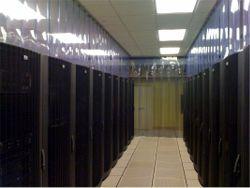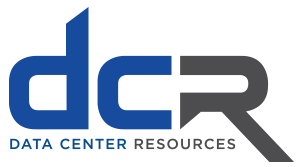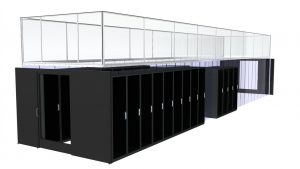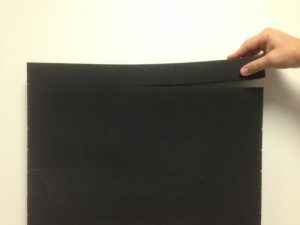Data centers have traditionally been associated with cold temperatures. Until recently, managers wouldn’t think of increasing the air temperature their CRAC units would supply. The thought was simply the more cooling the better. This mindset has led to a situation where data centers are now spending as much or more money to power the cooling infrastructure as they do for the IT equipment itself. However, with today’s budget constraints and green inititives there has been a strong focus on getting more efficiency from their cooling system. The most effective way to realize energy savings is to increase the set point on the CRAC units. “In simple terms, it is equivalent to raising the thermostat setting in your home”, says Rick Berendes, Cooling Specialist at Data Center Resources, LLC. This sounds obvious and simple but considering the critical nature of data center assets, that is hardly the case.
“Increasing the temperature in the data center can jepordize the health of servers and other hardware if it is not done carefully.”, warns Berendes, “Existing hot spots will become even hotter. Higher hot aisle temperatures will result in air mixing to create new hot spots. Server fans may be activated to offset efficiency gains and increase data center sound levels.” Berendes recommends the following step-by-step plan to optimizing the temperature in a data center.
Step 1 – Implement a good temperature monitoring system
Increasing set points and hoping there are no problems is a recipe for disaster. There are many low-cost, real-time temperature monitoring solutions to alert data center managers to warning or critical levels. We recommend measuring temperature at the three ASHRAE recommended locations at the front of each cabinet (bottom, middle, top) as well as one point in the rear. This ensures each level of the cabinet is within the safety zone and provides some visibility of the temperature delta in each cabinet.
Estimated cost per cabinet: $100
Step 2 – Seal front to back air flow in server cabinets
Assuming a hot/cold aisle layout, it is critical to prevent air mixing from hot aisle to cold aisle within the server cabinet. Higher supply temperatures can result in hot aisle temperatures in excess 100 degrees. That hot air will work it’s way to front of cabinets and server intake if cabinets are not properly sealed. In addition to using blanking panels to cover all unused RU spaces, any other gaps to allow air to travel within the cabinet must be sealed. Any space between rack rail and side panels need to be filled as well as the horizontal space above and below the rack rails. Any gaps between cabinets must also be addressed.
Estimated cost per cabinet: $50 – $150 per cabinet depending on open RU spaces
Step 3 – Implement an aisle containment solution
Now that supply and exhaust air cannot mix within the cabinet, it is time to focus on preventing air mixing outside the cabinet. Re-circulation over the top of cabinets or at row ends can result in hot spots. A retrofit aisle containment solution can isolate the air in the cold aisle or hot aisle to prevent air mixing. A properly implemented containment solution results in a relatively uniform temperature across the cold aisle. This will prevent the need for over-cooling to mitigate hot spots.
Estimated cost per cabinet: $200 – $350 per cabinet depending on type of containment
Step 4 – Incrementally increase set points
ASHRAE current recommend inlet temperature range tops out at 80.6 degrees but that may not be the optimal temperature for each data center. Server fans will generally turn on for self-cooling at 77 to 78 degrees. The power used for these fans can offset the incremental gains from the few extra degrees. It can also result in higher than recommended noise levels. However, rather than jumping all the way to these levels, it is important to adjust set points in small increments, maybe two degrees at a time and monitor the results over a 2 or 3 day period. This will help ensure there are not heat issues at various the production levels in the data center. If no issues occur, increase the temperatures and monitor again. If isolated issues occur, explore fixes such as sealing cable openings, utilizing high perforation tiles, exhaust fans, etc. Once the problem is addressed, monitor for another 3 days to ensure the fix did not cause any issues in another part of the data center. Continue these incremental increases until the target temperatures are reached.
It is estimated that increasing the set point by a single degree can result in 4-5% savings in energy costs. Increasing set points by 10 degrees, which is a very realistic number, can result in savings in excess of 40%. For a single 5 kW server cabinet, that equates to roughly $1250 per year in energy savings. Considering the investment of $350 to $600 per cabinet to implement this type of plan, an ROI in as little as 6 months can be realized.
For further information, call (866)740-2121 – Toll Free
Visit https://datacenterresources.com
Data Center Resources, LLC is a leader in providing power, cooling, monitoring and management products and services for the critical data center space. The company develops unique proprietary solutions and also serves as a direct distributor for many of the industry’s largest manufacturers. Customers include the federal government, state and local agencies and many of the world’s largest corporations.
Press Contact:
Kim Forbis
239-405-8224
kimf@datacenterresources.com
www.datacenterresources.com





